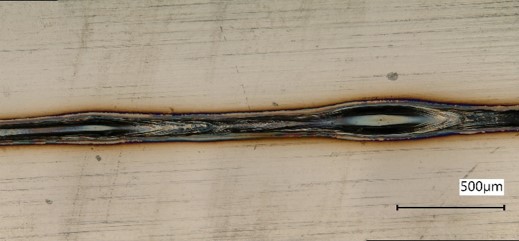Fax: (0 80 36) 9 08 20- 28
E-Mail: info@bbw-lasertechnik.de
Gewerbering 11
83134 Prutting
Since 2020, BBW Lasertechnik has been the project manager of the TopLamp research project, which is part of the "Eureka Eurostars" funding program. Together with the Fraunhofer Institute for Laser Technology (ILT), the South Korean scanner manufacturer K-Lab and the Korea Institute of Machinery & Materials (KIMM), we are developing a platform for the flexible production of metallic bipolar plates.
The TopLamp system goes far beyond the mere construction of a system and, in addition to researching the welding and cutting processes, also includes the intelligent evaluation of the process signals. The heart of the platform is a 2D-on-the-fly system developed by K-Lab, which enables a combined movement of the scanner mirrors and the axes. As soon as the 2D-on-the-fly system arrives in spring, we will upgrade it to a complete laser system, provide a 2kW single-mode laser and integrate process monitoring.
Development of intelligent process monitoring
We then use the system to focus intensively on the welding process and the evaluation of the process signals using machine learning. Alongside this, we build up a large database in which process parameters are linked to the resulting weld seam geometry and the process signals. Ultimately, our aim is to be able to draw clear conclusions about the seam shape and the weld seam quality based on the process signal. In addition, we will investigate whether it is possible to go the other way round and generate the process parameters and tolerance limits for the monitoring system based on a desired seam shape. If this is successful, it will no longer be necessary to carry out tests to set the weld seam geometry and define tolerance limits.
Research into welding and cutting processes
In parallel to our investigations, the welding process is being researched at the ILT in order to realize previously unattainable process speeds with simultaneously helium-tight weld seams. For example, irregular weld seams (see Figure 1) currently occur at high process speeds due to the so-called humping effect, which the ILT would like to prevent in the future. A new monitoring technology is also being used. With optical coherence tomography (OCT), the depth of the vapor capillary can be measured directly. OCT process monitoring is already available, but cannot yet be used for scanner welding with single-mode lasers. The ILT would like to rectify this deficit in collaboration with K-Lab.

The cutting process is being investigated at the South Korean institute KIMM. The focus here is on both remote cutting and cutting with a gas nozzle. We are particularly interested in researching the cutting process with a gas nozzle. Normally, the gas nozzle is attached directly to the optics. However, as we are working with a scanner in our case, the distance between the nozzle and scanner is over 300 mm and the two components have to be moved synchronously. Such a process has not been used anywhere else to date.
Once the individual tests have been completed next year, all the hardware, software and process knowledge we have developed will be integrated into our system. Once all project investigations have been successfully completed, we at BBW Lasertechnik will have the world's most advanced system for the flexible production of metallic bipolar plates.
Even if there are still some challenges to overcome until then - for example, organizational challenges due to the corona crisis - we are looking forward to further and hopefully soon personal cooperation with our South Korean and German partners.
A contribution by Florian Hugger
Links:
ILT: https://www.ilt.fraunhofer.de/
K-Lab: http://www.k-lab.co.kr/
KIMM: https://www.kimm.re.kr/eng
Eureka Eurostars: https://www.eurostars.dlr.de/
Further information on our research projects can be found here.